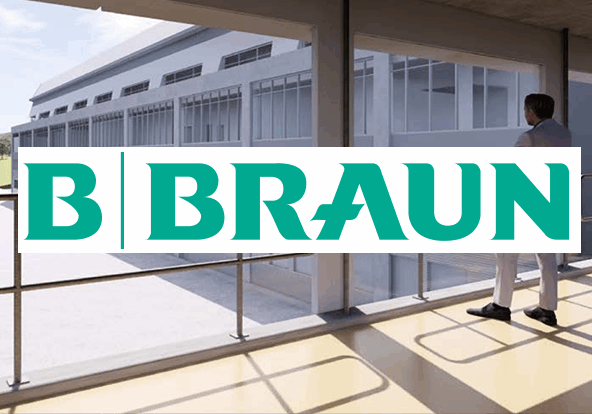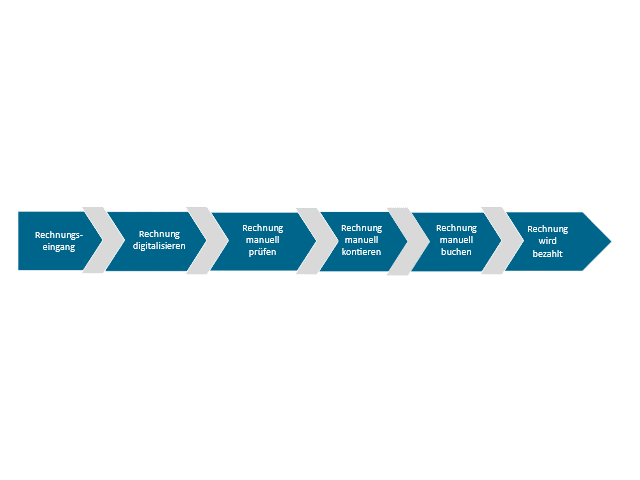Framework conditions
Over 1.1 million incoming invoices annually, more than 70 employees involved
Added value
Faster invoice processing, increased productivity, increased quality
Project success
Over 300% return on investment in the first year after rollout, through the reduction of routine activities
Challenge
B. Braun is one of the world's leading manufacturers of medical technology and pharmaceutical products and services. With the expertise of its more than 60,000 employees, B. Braun makes an important contribution to medical progress. Internally, B. Braun is also driving process improvements – for example, with the key technology AI in the area of invoice receipt.
Every year, B. Braun's accounting department receives over 1.1 million invoices, which are digitized and stored using optical character recognition (OCR). B. Braun's more than 70 financial experts review the invoices and post them to an account and cost center. This is a time-consuming manual process.

Goal
B. Braun wants to automate the review and classification of invoices, as well as their account assignment, to relieve the responsible employees of a time-consuming, routine task. The focus here is on previously unassignable invoices. Using AI as a tool in accounting, the company aims to make processes more efficient and free up employees for value-added work.
Solution
In a sensitive business area with stringent regulatory requirements, such as invoice receipt, B. Braun relies on eoda's data science experts, a service provider who understands the requirements and can scale the AI system from proof of concept to productive use in the business-critical process.
Based on historical invoice allocations and captures, eoda developed the machine learning algorithms that automate the review and accounting of digitized incoming invoices.
Since the great potential of AI lies in its consistent combination with human expertise, the system actively involves the relevant B. Braun finance experts. The AI system determines a so-called confidence value for each reviewed invoice. If this confidence value is above a defined threshold, it means that the algorithms are confident that the invoice has been correctly accounted for and no human intervention is required.

If the confidence level is low or the invoice amount is particularly high, B. Braun's financial experts intervene. The algorithms are trained and further improved based on their feedback. Thanks to the expertise and experience of eoda's data experts, more than a third of invoice audits were completed using automated workflows after just a very short period of time.
eoda has also trained B. Braun's responsible staff on how to use the AI system and easily adapt it to their requirements. This makes the algorithm understandable for those involved and sustainably increases acceptance.
Result
With the support of eoda and the use of artificial intelligence, invoice receipt could be more automated, creating more time for other tasks and increasing quality.
"Working with AI conserves our employees' resources. The project with eoda is a major step toward greater productivity. The AI's hit rate is pleasingly high, and users are very satisfied with the results. In the first year after rollout, we achieved an ROI of over 300% with this project."
Andreas Amrein | Director Smart Automation Services & Accounts Payable | B. Braun


"B. Braun has recognized the enormous potential of AI and wants to use it to further strengthen its competitiveness. With the successful integration of AI into accounts payable processes, we were able to jointly implement the first productive AI project across the entire company. We would like to thank B. Braun for the trust they have placed in us."
Heiko Miertzsch | Co-founder | eoda
Information about the technical and methodological implementation
For optimal usability, eoda seamlessly integrated the algorithms into B. Braun's existing system landscape based on Microsoft Azure Databricks. The algorithms and their calculations were implemented by eoda in R and Spark to ensure high analysis performance even with such a large database. The methodological basis for the automated classification of incoming invoices is ensemble modeling with random forests, boosted trees, neural networks, and other methods.
*Image source B. Braun Melsungen SE
Get started now:
We look forward to exchanging ideas with you.

Your expert on Data-Science-Projects:
Lutz Mastmayer
projects@eoda.de
Tel. +49 561 87948-370